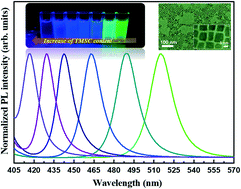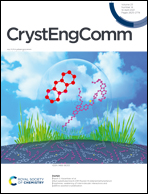Emission wavelength control of CsPb(Br1−xClx)3 nanocrystals for blue light-emitting diode applications
Abstract
All-inorganic materials, mixed halide perovskite (MHP) nanocrystals (NCs), have attracted considerable attention recently because of their excellent luminescence efficiencies and extraordinary physical properties, making them a promising material for next-generation lighting and full-color display. On the other hand, an essential development of blue-emitting devices rather than other color emitters has been hindered by their defect tolerance and quantum efficiency which are relatively lower than those of green-emitting NCs. Moreover, few studies have examined the synthesis and properties of blue-emitting MHP NCs or their applications to light-emitting diodes (LEDs). To solve these problems, this paper reports a facile and controllable way of producing emission wavelength tunable CsPb(Br1−xClx)3 NCs using a fast and straightforward chemical treatment with the trimethylsilyl chloride (TMSC) additive. Structural and chemical analysis showed that the Cl content in the CsPb(Br1−xClx)3 NCs could be modulated by TMSC addition without changing the morphologies. The photoluminescence emission peak wavelength of the CsPb(Br1−xClx)3 NCs could be modulated from 515 to 416 nm by increasing the TMSC content. To this end, blue and green LEDs were successfully demonstrated by using the TMSC-treated CsPb(Br1−xClx)3 NCs as an emissive layer, showing a controllable emission wavelength from 473 to 511 nm.

- This article is part of the themed collection: Nanomaterials


 Please wait while we load your content...
Please wait while we load your content...